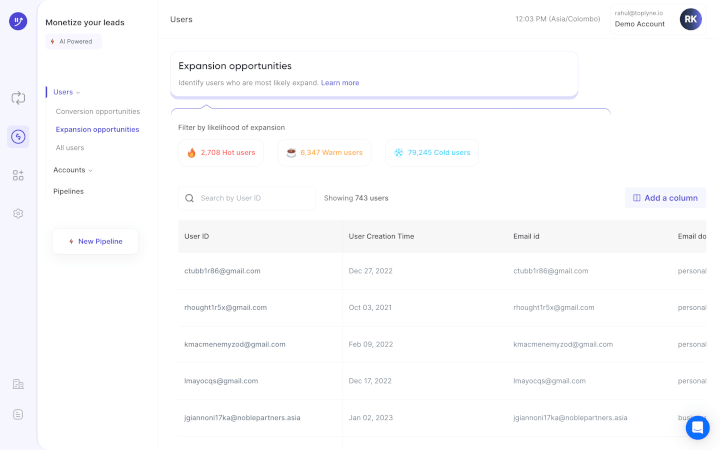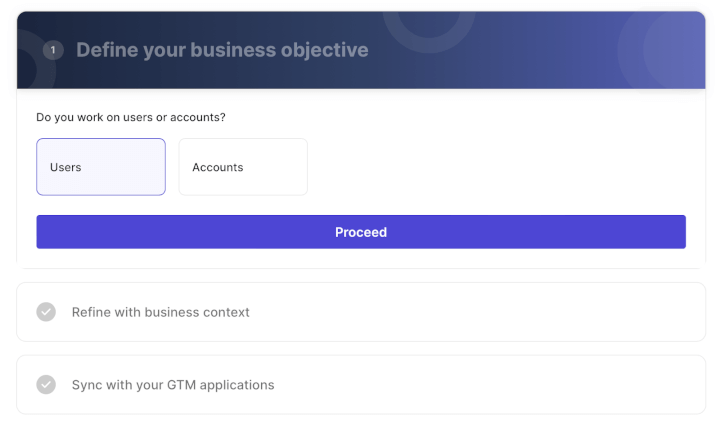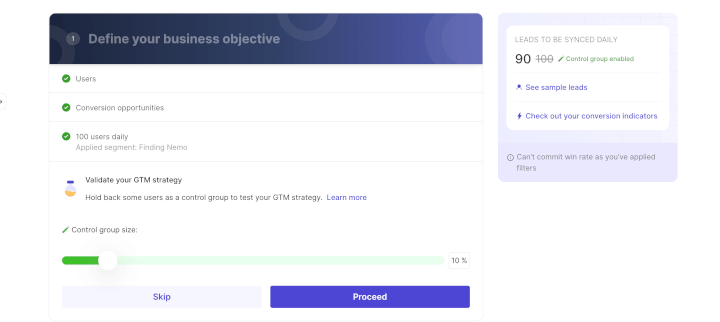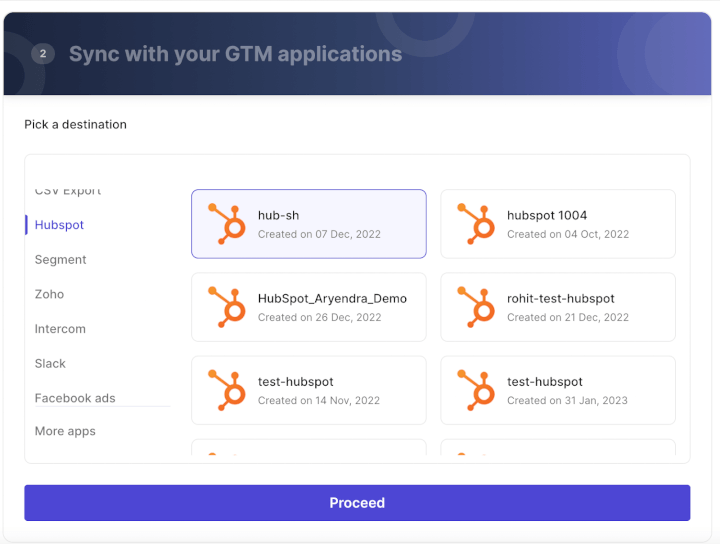MQL vs SQL: Differences, Strategies (and a Better Alternative)

How do you know if a lead is just browsing or ready to buy?
That’s what differentiating between MQL vs SQL tells you.
To understand the MQL to SQL customer journey, we’ll look to the nostalgic world of Pokémon.

You see, to make a strong Pokémon team, you must strategically choose Pokémon to catch with a well-timed Pokéball toss.
Likewise, in product marketing, a sales representative has to reach out to the right leads at the right time to get conversions.
But here’s a pika-plot twist:
There’s another way to catch leads – through your product. And it might just be the very best.
In this article, we’ll define MQLs and SQLs, compare them, and explain why knowing the difference is important. We’ll also explain how to evolve your MQLs into SQLs successfully.
Next, we’ll get into all things PQL (product-qualified leads) – explaining what they are, why you should target them, and how to build a winning PQL pipeline with an extraordinary tool.
Let’s (Pokémon) Go!
What Is an MQL?
A marketing qualified lead (MQL) is a potential customer who has interacted with your:
- Marketing materials
- Website
- Landing pages
- Calls-to-action (CTAs)
- Content offers
But don’t whip out the pokéball yet!

A marketing qualified lead still needs nurturing to increase their interest in your SaaS product.
What Is an SQL?
A sales qualified lead (or sales accepted lead) is a prospective customer who is ready to talk to sales about purchasing.
Typically, the marketing team determines buying readiness by assessing lead behavior and fit. If everything checks out, they transfer the leads to the sales team, and the sales process begins.
But here’s the thing:
If your marketing teams aren’t qualifying leads correctly, you could run into trouble.
Reaching out to a prospect before they’re ready can cause them to reject the sale and possibly exit your sales pipeline.

So, how do you accurately differentiate between MQLs and SQLs?
Let’s find out.
MQL vs SQL: What’s the Difference?
As mentioned, MQLs and SQLs differ by their sales pipeline position and buying intent.
You can use the following lead qualification (AKA sales qualification) signals to identify them:
1. Number of Visits
A lead may become an MQL after their first visit to your website.
However, a lead who returns repeatedly may be closer to SQL status.

You can use analytics tools (e.g., Google Analytics, Amplitude, Mixpanel) to determine:
- Which leads are returning regularly.
- How long they’re staying.
- Which pages they’re revisiting.
2. Engagement Count
An MQL may download a content offer, but this doesn’t mean they’re interested in purchasing. They may just be doing research.

An SQL, on the other hand, may engage with your digital marketing content repeatedly and across multiple channels.
3. Type of Engagement
The effort involved in different user actions can provide purchase intent data when qualifying leads.
For example, an MQL may download a free content offer, but an SQL might fill out a form or request a product demo.
4. Marketing Channel
As you study your marketing analytics, you’ll figure out which inbound marketing channels produce the highest-quality leads.
For example, you may classify leads from a Facebook marketing campaign as marketing qualified leads. However, when a lead comes from your email marketing campaign, you can bump them up to an SQL.
You can think of the MQL and SQL categories as a duo that helps you convert efficiently.

However, it’s still vital to be able to tell them apart.
Why Differentiate between MQL vs SQL?
Here are three key reasons to distinguish between MQLs and SQLs:
1. You’ll Better Align Your Sales and Marketing Strategy
It takes teamwork to reach the right leads at the right time.
When your marketing team accurately identifies SQLs, your sales team won’t waste as much time contacting unqualified leads who won’t purchase.
Instead, each sales rep in your sales department can focus on leads that are likely to convert.
Additionally, the marketing team can improve their lead generation and nurturing systems based on which leads end up converting.
This all makes for a faster sales cycle and more revenue.

2. You’ll Know When to Reach Out
You can move MQLs down the funnel with content about your product’s features, benefits, and use cases.
However, once you identify a sales accepted lead, you should act swiftly and “Pokémon GO” get them on a sales call! ☎️
When you perfect your lead qualification system, you perfect your timing. After all, you don’t want SQLs floating in the funnel when you could already have converted them!
3. You’ll Grow Your ROI
Lead generation and nurturing costs time and money. So, the more leads you convert, the more profitable your inbound marketing investment becomes.
If your marketing and sales teams can focus on high-potential leads, you can close more deals overall.

This means a better return on investment (ROI) for your sales and marketing efforts.
Now that you can identify leads, you may wonder, “How do I transition MQLs to SQLs?”
How to Master the MQL to SQL “Evolution”
Once you’ve identified your marketing qualified leads, you can feed their interest until they evolve into sales qualified leads.

Here are five ways to guide the evolution:
1. Lead Nurturing
Lead nurturing describes digital marketing strategies that draw leads down the sales funnel.
A great way to nurture leads is through relevant and valuable targeted content that helps familiarize leads with your product.
Some examples include:
- Email marketing campaigns
- Newsletters
- Blog posts
- E-books
- Whitepapers
- Case studies
You can also utilize marketing automation tools (e.g., Customer.io, HubSpot) to streamline your marketing strategy.
2. Landing Pages
A landing page is designed to convert visitors to leads or customers. You can use email, social media ads, and SEO marketing efforts to direct leads to these pages.
They should include a downloadable content offer and a form so you can contact each potential customer later.
Tip: A prospect that has shared details about themselves with you is called an information qualified lead (IQL). Such information becomes lead intelligence that can also be used to make a sale.
3. Lead Scoring and Grading
Lead scoring is a form of purchase intent data where you evaluate leads’ interest by assigning points to their actions.
When an MQL crosses your chosen milestone score, they meet your qualification criteria and evolve into SQLs.
Lead grading works similarly for evaluating if leads fit your buyer persona, based on demographic data – or firmographic data for B2B sales.
There are many lead scoring and grading tools on the market to automate the process.
4. Retargeting
A sales lead leaves a digital trace when they visit your website. This allows you to “retarget” them with advertising on other platforms.
For example, your marketing department could set up a Facebook marketing campaign that targets your website visitors from the month.
According to a benchmark report by Rain Group, it can take eight touches, on average, to secure a meeting or sale with an SQL.

So, the more touchpoints, the better.
5. Sales Handover
Your marketing and sales teams must align on definitions and lead intelligence sharing. This gives sales reps the best chance of closing deals.
If unsuccessful, a sales rep should be able to reclassify MQLs and send them back to the nurturing phase.
You may be wondering:
This sales process seems like a lot of work… Is there a better way?
Should You Target PQLs Instead?
While the traditional MQL and SQL make a good team, much like Team Rocket, they might not be the most effective way to build a funnel for product-led growth (PLG) companies.

But if you want your SaaS company to be 🎶“the very best like no one ever was”🎶🎸, you should consider doing things the Ash Ketchum way!
Think about it:
Ash catches Pokémon and shows them the value of joining his team. His Pokémon are loyal to him. And he wants to train them to be more powerful and to evolve!

Curious?
Let’s take a closer look at product-qualified leads (PQLs).
What Are Product-Qualified Leads?
PQLs are leads that discover your product’s value while using a free trial or freemium plan.
This happens when you design an onboarding journey that guides users toward an “aha! moment” – the activation point.
Users who “try before they buy” can discover first-hand how your product helps them with their needs and goals.
You can think of the product-qualified pipeline like this:
- Catch: Utilize PLG marketing to attract users to try your product for free.
- Train: Optimize onboarding to drive activation. Utilize in-app nudges and other GTM (go-to-market) strategies to encourage users to explore your product’s features.
- Evolve: Use the right messaging at the right time (based on in-app behavior) to convert free users into paying customers. Then, nurture your existing customers in the app to boost customer loyalty and unlock expansion opportunities.

So, how exactly do you identify PQLs?
The three main characteristics of PQLs are:
- Activation: Users who have reached the “aha! moment”.
- Customer fit: Users who are well-suited to your product, based on your buyer persona.
- Purchase intent: Users whose in-app behavior indicates interest in purchasing your product.
Want an app that identifies PQLs for you?
We’ve got the perfect tool.
First, let’s explore what makes targeting PQLs so beneficial.
Benefits of a Product Qualified Lead Strategy
Here are five reasons to target PQLs:
1. Focuses on Product-Led Growth
Ash Ketchum once said, “There's no sense in going out of your way to get somebody to like you."
With product-led growth (PLG), your product is the champion of your strategy, not your sales and marketing teams. If it’s good, people will buy it.

Furthermore, the PLG approach allows you to convert more leads, faster, and with less sales and marketing effort.
This results in a lower customer acquisition cost (CAC), a shorter sales cycle, and rapid wins!
2. Grows Your User Base
The word “free” makes great bait to reel in an abundance of new users 🎣.
You can then use your product to drive conversion and expansion, turning newbies into power users.

3. Prioritizes High-Intent Leads
The MQL to SQL approach of studying website and marketing engagement can mislead you into contacting unqualified leads.
On the other hand, PQLs are qualified by product-usage data, which provides powerful signals of buying readiness like:
- Frequent use
- Feature adoption
- Adding team members
- Requesting in-app sales assistance
4. Helps You Reach Out at the Right Time
Product-usage data can also guide you to a well-timed sales opportunity.
For example, it might be a good time to reach out to a prospective customer when they:
- Reach the end of their free trial.
- Are seeing positive results.
- Hit a paywall.
- Need help reaching activation.
The result?
More wins!

So, how do you build a product-qualified pipeline?
Let us show you the easiest way to PQL victory 🏆.
Build an Automatic PQL Pipeline with Toplyne
Toplyne is a unique behavioral AI that can help you build a high-performing product qualified lead pipeline that:
- Identifies conversion and expansion opportunities.
- Boosts your win rate.
- Improves your net retention revenue (NRR).

It operates between your product analytics tools (e.g., Mixpanel, Amplitude) and your GTM apps (e.g., Hubspot, Salesforce).
And since the tool’s headless, no change management or extra UIs are required!
Here’s how companies like Canva and Vercel generate sales pipeline from their self-serve funnel using Toplyne:
- Step 1/7: Create monetization playbooks to surface conversion and expansion opportunities (leads most likely to convert to paying customers, and teams most likely to grow into larger teams)

- Step 2/7: Choose the right leads to target – users (individual users) or accounts (a group of users with an organization).

- Step 3/7: Select the frequency at which you would want leads synced in your GTM apps.

- Step 4/7: Define how many leads you want by either the number of leads or your expected win rate, depending on your sales capacity and GTM strategy.

- Step 5/7: Build custom segments - Build custom segments based on And/Or logic at the deepest level of sub-properties within your product analytics.

- Step 6/7: Validate your GTM strategy - Hold back some users as a control group to test your GTM strategy.

- Step 7/7: Sync your product qualified pipeline into your GTM destinations - CRMs, sales & marketing execution tools, and customer engagement platforms.

The bottom line?
More wins and more revenue 💸!
Be the Very Best with Toplyne
Companies utilizing marketing-led and sales-led growth strategies must understand the difference between MQLs and SQLs.
Doing so helps you identify leads that are ready to purchase so your sales department contacts the right prospects.
It also lets you build a better sales funnel for transitioning leads from marketing qualified to sales qualified.
However, if you’re a:
✅ SaaS company
✅ With a fantastic product
✅ And a free trial or freemium plan
There’s a good chance that the marketing qualified to sales qualified lead funnel isn’t doing your product justice.
A PQL pipeline lets you prove your product’s value and curate a loyal user base of highly-engaged customers.
But don’t take on PLG without Toplyne – a tool that automatically surfaces a high-performing pipeline of PQLs right in the CRM of your choice!
Try Toplyne for free to reel in every high-intent sales lead!



.svg)









.png)